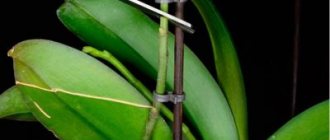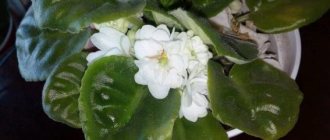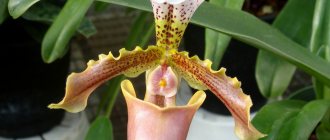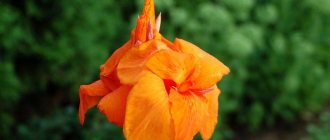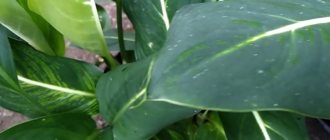Growing orchids is a simple but very exciting activity. In addition to the well-known and widely practiced methods of breeding these exotic plants and further care at home, there are alternative, no less effective methods.
However, they require additional theoretical and practical basic knowledge that will help to correctly assess the condition of the flower and its needs.
Pros and cons of the method
Advantages of growing orchids using hydroponics:
- There is no need for constant replanting.
- The flower does not lack fertilizer.
- Since the appearance of soil pests and rot is a significant problem for orchids, this problem does not appear when grown in water.
- The root system receives all the necessary nutrients necessary for the favorable growth of the flower.
The problem of drying out roots and lack of oxygen disappears.- The time required to care for the plant is reduced, as there are automated solution circulation systems. You just need to add water at regular intervals. You can leave the phalaenopsis for a while and not worry about it drying out.
Disadvantages of using hydroponics:
- the water should be constantly cool;
- it is necessary to ensure that water covers the root system, and if necessary, top up;
- Feeding the orchid is carried out throughout its growth.
Translation: what you need to know
Plants are transferred to the open system gradually. At this time they should not bloom or produce flower stalks. Main stages of transplantation:
- release from bark (should be carefully peeled and washed);
- introduction to the regime “2 days in an aquatic environment - 1 day of drying” during the first week;
- lengthening the water gap to 5 days with 1-2 “dry” days (second week);
- after a month - constant maintenance with a weekly change of liquid and washing of the pot.
At this time, you need to very carefully monitor your reaction and well-being. Some require longer drying times, such as Cattleya. A silver color will indicate the need to replenish moisture. Sometimes mold appears on the root system. It can be removed with a cotton swab moistened with a fungicide or hydrogen peroxide. Can be sprayed from a spray bottle.
In order for the experiment to be as successful as possible, without sad consequences, experienced gardeners advise :
- try the technique in spring or early summer, when the flowers are active and the results will be faster and more obvious;
- in the warm season, exclude stimulation in the form of drying;
- if the transplantation occurred during a period of suspended animation (in winter or autumn), you can flood the plant to the base of the neck for about a day, and then leave it in an empty pot for a day or two;
- when immersing after drying, add a little peroxide - to saturate the liquid with oxygen and prevent rot;
- for keeping in an aquatic environment, find a favorable place - sufficiently lit, warm (20-23C, humidity 60-75%); cool window sills with drafts are not suitable in this case.
The water must be softened - rain, melt, boiled, settled. You can filter it using peat. It is very important to care for the leaves - to clean them from dust and dirt. With the help of this organ, orchids breathe, maintain moisture balance, and accumulate nutrition. The leaf is, among other things, an indicator of health. Sometimes a yellowing or stain detected in time can help save a pet.
Note! According to experts, the veloman radically changes its cellular structure. So much so that the entire system dries out and dies if it is planted in a substrate. In order for it to take root in a closed soil system, it is necessary that most of it is not “watery”.
For many connoisseurs, the sight of an exotic plant in a “glass” does not bring aesthetic pleasure; it seems like something temporary, unfinished. Very important moments disappear from the care system: the joy of interaction, aesthetic pleasure from the structure of the soil and the beauty of flowerpots. Conservative owners reject strange trends and remain faithful to a closed system. And everyone, without a doubt, has the right to follow their own preferences.
Step-by-step instructions for keeping it in solution
It is not necessary to use substrates and nutrient mixtures to provide the plant with adequate nutrition. All the necessary elements can be dissolved in water.
Composition and concentration of substances
It is necessary to add fertilizers to the water, the same as for soil cultivation. You need to feed the orchid constantly.
The concentration of fertilizers with this method should be equal to half the normal concentration when watering orchids in the ground.
Cleaning and inspection
Before planting, the roots are washed under running water and cleared of the previous substrate.
You can see green algae on the roots, but you shouldn't remove them. In the future, they will improve gas exchange in water when it stagnates.
Transplanting into a new pot
Depending on how many new roots the orchid has produced, you can determine whether it needs to be kept in the container further or whether it’s time to transplant it into a larger pot.
Before planting an orchid in expanded clay, its roots must be inspected and then washed under running water. The container is filled to half, the flower is transferred, after which water is added.- If it is decided to transfer the orchid to perlite, the container is filled with expanded clay. Then you should plant the orchid and sprinkle it with perlite, leaving one centimeter short of the edge of the container. The container is placed in water to compact the perlite around the roots. To decorate, you can sprinkle pebbles on top for decoration.
- When transferring a plant into diatomaceous earth, expanded clay is poured to the level of the covering hole, the orchid is transferred into diatomaceous earth and covered with expanded clay on top.
- If a greenmix mixture is used for planting, expanded clay is poured to the level of the covering hole, the orchid is transferred and the container is filled to the top with the mixture. To compact the resulting substrate, water it generously.
Important! The greenmix mixture and diatomaceous earth should not dry out. Otherwise, they will take moisture from the root system of the plant, and this will lead to the death of the flower.
Why is this possible
Epiphytic plants generally do not need soil to feed. One of the few, they are able to adapt to various habitats. Unique roots help them firmly anchor themselves on a rock or trunk of a tropical giant. Obtain moisture from the atmosphere and essential microelements from natural organic composts.
The outer shell of the scout roots, the velomen , is capable of rearranging its own cellular structure to suit changing conditions. The aerial root, encountering an obstacle in nature, stops working only to absorb moisture and tries to catch on and hold on. The velomen becomes thinner in this area, and additional hairs begin to grow on it.
If you place a tropical exotic in an aquatic environment, it will gradually adapt to life in it.
Recommendations for home care
- When growing orchids in water, water quality plays an important role. It is better to pass it through a filter or use rainwater.
- Salt often accumulates in water containers. To eliminate it, the pots must be washed thoroughly with water every month.
- In winter, the water level in the container should not be higher than one centimeter.
- For feeding, it is better to use nutrient solutions taking into account the life phase of the orchid.
- In summer, the temperature should be cool in the room where the flower is located. In winter, the temperature should not exceed 25 degrees.
On our website there is a lot of information about orchids: about planting, Thai and Vietnamese orchids, growing from babies and in flasks, as well as in a closed system. Is it possible to use seeds to cultivate an orchid and how to grow a beautiful flower from seeds at home?
How long should the plant be kept in this state?
How long should you put the flower in water? Since the purpose of this method is to constantly keep the flower in water, it is necessary to keep it in this state constantly. The fluid is changed once a week. The water must be rainwater or filtered.
If you use different substrates, watering is carried out differently:
- When using expanded clay, before thoroughly watering, the flower and root system are initially completely sprayed.
- If the soil is based on iatomites, perlites or greenmix mixtures, then the root of the plant is initially sprayed, and then the water is made to flow down the walls of the container with the orchid.
Attention! Nutrient solutions are selected depending on the type of flower.
General provisions
Epiphytes - what are they and how do they grow in nature?
In nature, this exotic beauty grows on trees. But the flower is not a parasite, since it takes food for its development from the air and dead tree bark , which may be located in a crevice or other recess.
In this regard, the orchid belongs to the group of epiphytic plants growing on trees.
The structure of orchid roots
The roots of the plant consist of:
- Conductive thread;
- Parenchyma;
- Velamena;
- Apical tip of the root.
All parts are involved in photosynthesis of the plant and are vital for proper metabolism. With frequent watering, the velamen and parenchyma rot, exposing the root to a conductive thread. Therefore, drying of the flower is required.
Orchid root: 1 - Central cylinder; 2 - Epiblema; 3 - Velamen.
Basic rules of watering
When cultivating a plant, it is important to choose the right watering regime and water quality. Here are the basic rules for watering:
- Water the flower when the roots turn whitish or light gray. Green roots do not need watering;
- The bark should dry 2/3 of the container;
- The water used for irrigation should be warm, settled and soft. Water hardness can be reduced by boiling.
Sprinkling
You can bathe the plant in the shower - this is very useful . As a result, good leaves will grow and larger flowers will bloom.
Method of how to bathe an orchid using a shower to simulate rain:
- the plants are placed in the bathtub and watered with low pressure from the shower, but the water should be soft and warm 30-40 degrees ;
- imitate rain until the bark is completely wet, after which the flowers are left there so that the water completely drains from the substrate. There is no point in spraying water on the flowers ;
- after an hour, you need to wipe the sinuses of the leaf plates so that moisture does not accumulate there, which can lead to rotting of the leaf and its death. Especially the removal of moisture concerns such plant species as Phalaenopsis and Vanda.
Immersion method
Also very often, gardeners use immersion watering. This is used in most regions of Russia, because the water flowing from the tap is quite hard.
The main rules for how and how much to immerse orchids in water:
- water is prepared according to the parameters in advance;
- the container where the plant will be immersed must be of such a size that the immersed pot with a flower can wet its entire bark;
- immerse the container slowly so that the dry bark cannot push the roots of the flower into the air;
- The length of time plants should stand in water depends on the size of the root mass. Typically the dive lasts from 10 to 25 minutes ;
- After the watering procedure, you must allow the water to drain completely and only then place the container with the flower on the tray.
Source
Techniques for growing orchids in semi-hydroculture
The best way to grow orchids is to use semi-hydroculture. This technique involves immersing the plant's roots in an inert material that cannot decompose. In addition, the roots are provided with continuous access to water and fertilizers.
The use of semi-hydroculture is based on the capillary properties of expanded clay. Water is poured into a container with this material to a level of approximately four centimeters. Under the influence of capillary forces, this water rises upward to the roots of the orchid planted in this container. That is, the function of expanded clay is diametrically opposite to drainage - instead of eliminating excess water, it supplies the roots with moisture.



